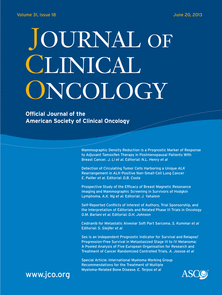
Ewing sarcoma: Similar survival rates with intensified dose regimen of VDC/IE

Ewing sarcoma: Similar survival rates with intensified dose regimen of VDC/IE
Dose-intensified compared with standard chemotherapy for nonmetastatic Ewing sarcoma family of tumors: a Children's Oncology Group Study
J Clin Oncol. 2009 May 20;27(15):2536-41. doi: 10.1200/JCO.2008.19.1478. Epub 2009 Apr 6Did you know you're eligible to earn 0.5 CME credits for reading this report? Click Here
Synopsis
478 patients under the age of 30, diagnosed with non-metastatic ESFT (or the Ewing sarcoma family of tumours), were randomized to either a standard or intensified dose regimen of vincristine, doxorubicin, and cyclophosphamide (VDC) along with ifosfamide and etoposide (IE) to assess the 5-year event-free and overall survival rates between groups. Results indicated that there was no significant diff...
To view the full content, login to your account,
or start your 30-day FREE Trial today.
FREE TRIAL
LOGIN
Forgot Password?
Explore some of our unlocked ACE Reports below!

Learn about our AI Driven
High Impact Search Feature
Our AI driven High Impact metric calculates the impact an article will have by considering both the publishing journal and the content of the article itself. Built using the latest advances in natural language processing, OE High Impact predicts an article’s future number of citations better than impact factor alone.
Continue



 LOGIN
LOGIN

Join the Conversation
Please Login or Join to leave comments.